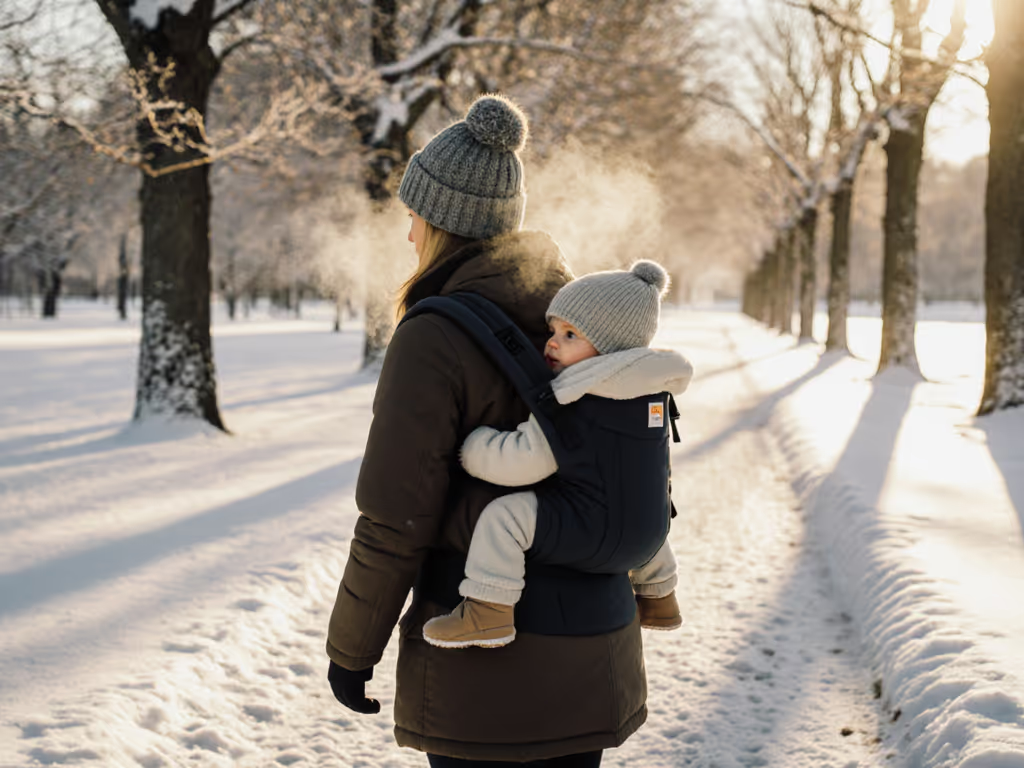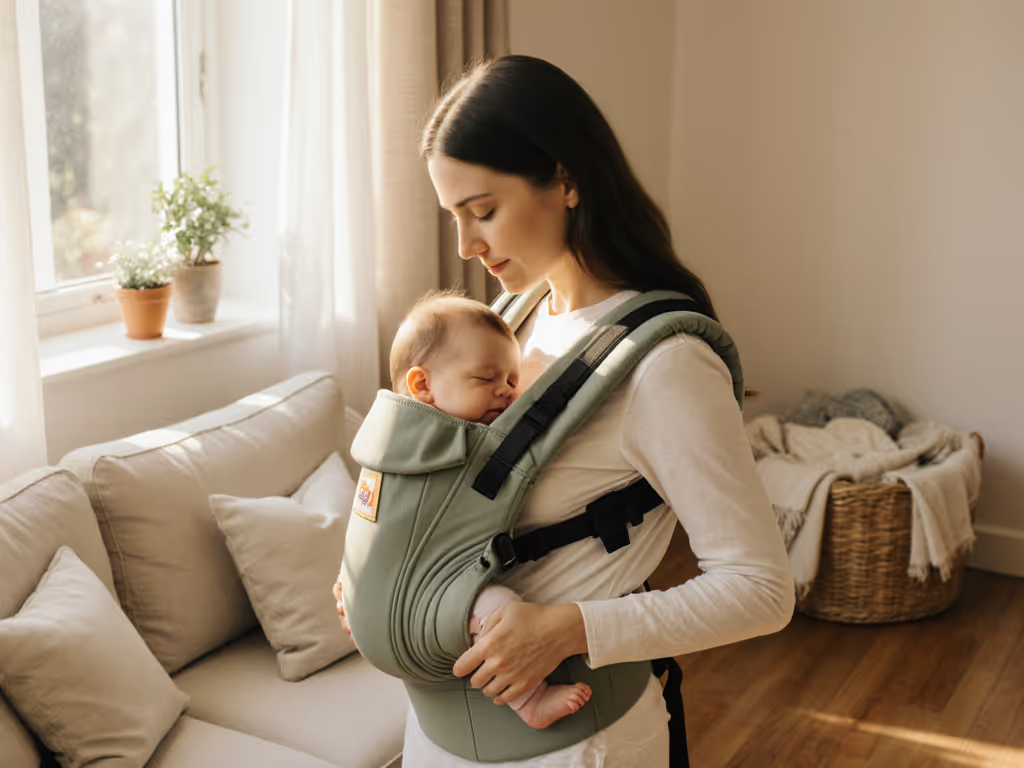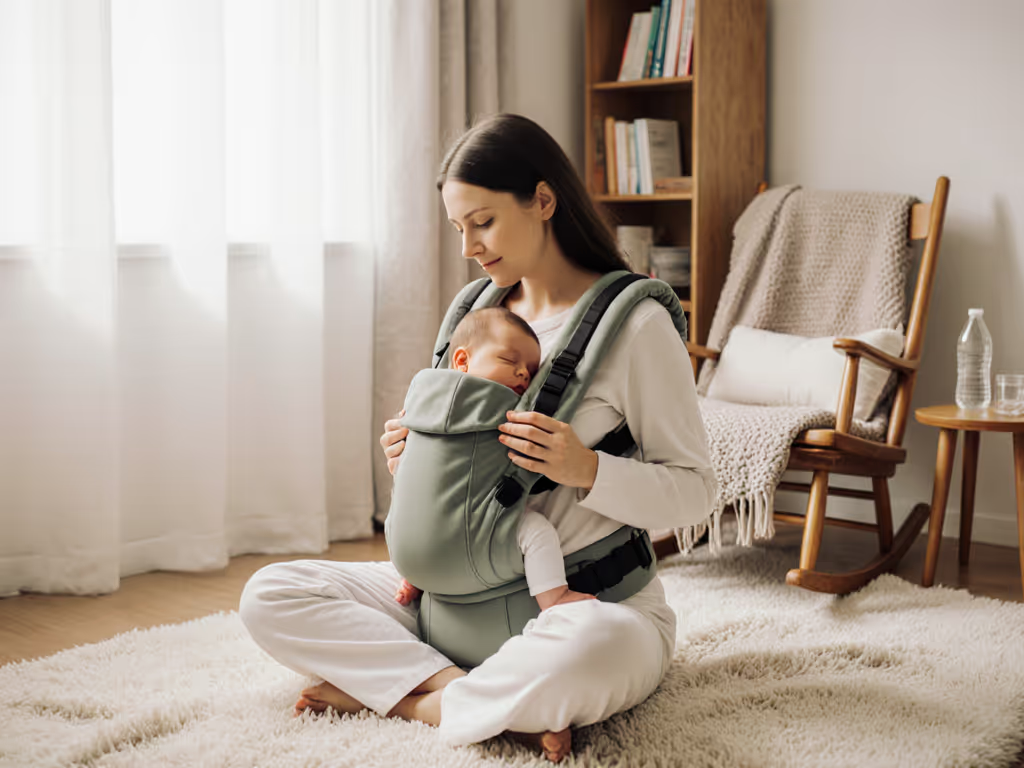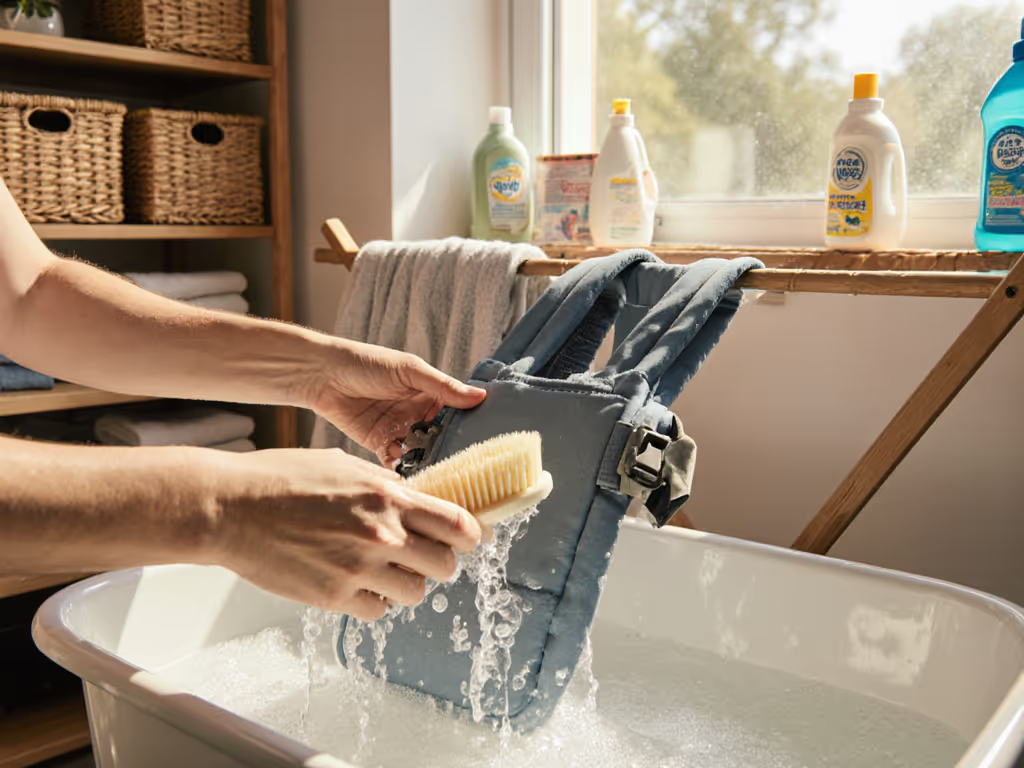
Babywearing Milestones: Adjusting Carriers for Rolling & Sitting

As your baby hits babywearing developmental milestones like rolling over and sitting independently, your carrier adjustments for baby growth become non-negotiable for safety and comfort. These transitions aren't just cute milestones (they are physiological signals that your current setup may no longer support your baby's hips, spine, or airway). Review the T.I.C.K.S. babywearing safety checklist to protect airway and posture as mobility increases. When caregivers miss these cues, I see strained shoulders, slumped postures, and restless babies in my clinic. Fortunately, carrier adjustments for development follow predictable anatomical patterns you can learn to read. Comfort is a posture achieved, not a promise on packaging.
Understanding the Rolling Phase (4-6 Months)
Between 4-6 months, your baby develops the muscle control to roll from tummy to back (a major neuromuscular leap). But here's what's rarely discussed: Their newfound mobility creates unique safety risks during babywearing if your carrier isn't adapted. In this stage:
- Hip positioning shifts: Legs that previously stayed bent against your chest may now kick outward, risking a "straight-leg" position that pressures hip joints
- Torso stability fluctuates: Babies may arch or slump when attempting to roll while worn, compromising spinal alignment
- Airway vulnerability increases: Sudden head turns during rolls could obstruct breathing if head/neck isn't fully supported

Ergobaby Omni Classic All-Position 360
This is why I recommend checking these three elements monthly as your baby grows:
- Seat width: Must fully support thighs from knee to knee (no dangling feet)
- Panel height: Should reach mid-chest for head support and prevent slumping
- Strap tension: Needs micro-adjustment to accommodate changing torso length
Remember that grocery run I took three weeks postpartum? When my carrier stopped supporting my posture, my baby stayed restless. Precision adjustments changed everything.
Safe Adjustments for Rolling Babies
Babywearing when baby rolls requires strategic tweaks, not carrier replacement. Most structured carriers accommodate these changes through subtle modifications:
1. Narrow to Wide Seat Transition
Between 4-5 months, babies outgrow the narrow "fetal" seat position. If you notice:
- Diaper lines on baby's thighs
- Knees positioned below bum in carrier
- Your baby consistently kicking legs downward
Action: Release your carrier's seat-widening mechanism (usually side snaps or sliders). A proper "M-position" should show knees higher than bottom with thighs fully supported (critical for hip development). Example: The Ergobaby Omni 360's adjustable bucket seat grows with baby using one-handed sliders, eliminating fabric bunching that strains caregiver shoulders.
2. Dynamic Head Support
Rolling practice means babies tilt their heads unpredictably. Never rely on a stationary hood. Instead:
- Position panels to mid-ear level for instant head cradling if baby slumps
- Cross chest straps temporarily to stabilize torso during active phases
- Avoid full outward-facing until 6+ months (rolls can catch babies off guard)
3. Waistband Re-Positioning
As babies gain weight in the torso (not just legs), shift your waistband from "low" (near hips) to "high" (under ribcage) to:
- Prevent pelvic pressure during sudden rolls
- Maintain even weight distribution across your core
- Reduce diastasis risk for postpartum caregivers
Preparing for Sitting Independence (6-8 Months)
When your baby sits unassisted (typically 6-8 months), babywearing for sitting babies demands a paradigm shift. Now that their spine has two natural curves (cervical lordosis + lumbar lordosis), flat carriers cause lumbar strain. Key adjustments:
📏 The 90-Degree Rule
Verify these angles monthly as your baby sits more:
| Body Part | Safe Angle | Risk if Incorrect |
|---|---|---|
| Hips | ≥90° (knees level with bottom) | Hip dysplasia risk |
| Knees | > hip level (M-position) | Nerve compression |
| Spine | Gentle "C" curve | Rounded back strain |
🔄 Transitioning to Back Carry
Back carries become essential around 7 months when:
- Baby's center of gravity shifts upward
- Outward-facing time exceeds 20 minutes
- You feel shoulder strain during front carries
Pro Tip: Practice back carries over a bed until confident. See our complete guide to baby carrier positions for safe back-carry setup steps. The BabyBjörn One's padded waistband distributes weight effectively for beginners, but all carriers require micro-adjustments after each transfer:
- Tighten waistbelt FIRST to anchor weight
- Cross shoulder straps behind baby's back
- Slide panel up until chin clears chest
Your Developmental Milestone Checklist
Use this monthly starting at 4 months. Stop and reassess if any "NO" applies:
-
Airway Check: Can you see baby's nose/mouth without lifting chin? → YES = Safe position
-
Leg Splay Test: Do knees sit higher than bottom with thighs fully supported? → YES = Hip-healthy positioning
-
Panel Reach: Does carrier fabric extend to mid-chest when baby is alert? → YES = Adequate spinal support
-
Waistband Slip Test: Does waistbelt stay fixed when baby shifts weight? → YES = Secure weight distribution
When Standard Adjustments Aren't Enough
For caregivers with mobility limitations or larger-chested bodies, these common friction points have evidence-based fixes: If mobility or dexterity is a concern, our adaptive babywearing guide covers accessible techniques and modifications.
-
Problem: Short torsos can't reach back buckles during transitions Fix: Use carriers with front-access waist buckles (like LÍLLÉbaby Complete) and pre-set straps
-
Problem: Arthritis limits finger dexterity for snaps Fix: Opt for magnetic adjusters or one-handed sliders (tested safe up to 45 lbs)
-
Problem: Hypermobile shoulders need extra stabilization Fix: Crisscross shoulder straps behind back to reduce tension
Remember: A carrier that worked perfectly at 4 months may strain you by 6 months, not because it's defective, but because your baby's babywearing developmental milestones changed your biomechanics. This is why adjustable carriers outperform fixed-design wraps beyond 5 months.
Actionable Next Step
This week: Do a "milestone audit" with your current carrier. With baby alert in your preferred position:
- Take a side-view photo
- Check hip/knee angles against the 90-Degree Rule
- Note any shoulder/hip strain after 10 minutes
Adjust one element immediately - widen the seat, raise the panel, or reposition the waistband. If strain persists after micro-adjustments, consult an International Hip Dysplasia Institute-certified carrier specialist. Your body's feedback is the most reliable data point. Support the caregiver, support the comfort that flows both ways.



